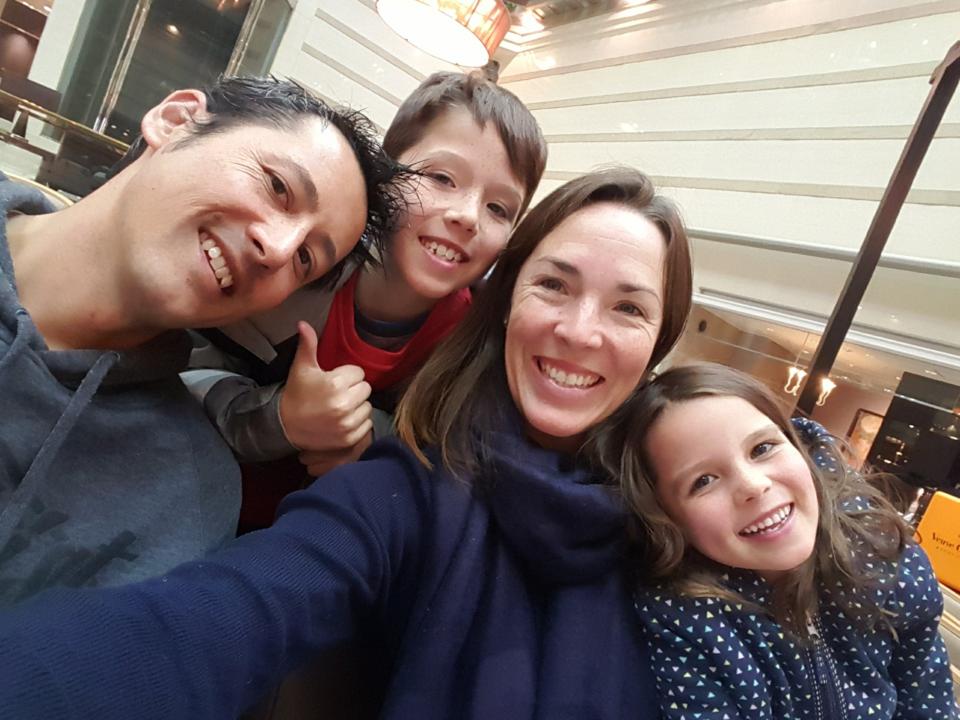From the drama and beauty of Arnhem Land to the larger-than-life Central Australian desert, the NT is the ultimate backdrop for dozens of great Australian films.
May sees the next instalment – Top End Wedding. If you’ve seen the trailer yet, you’ll know this film is going to make you want to pack up and drive to the NT.
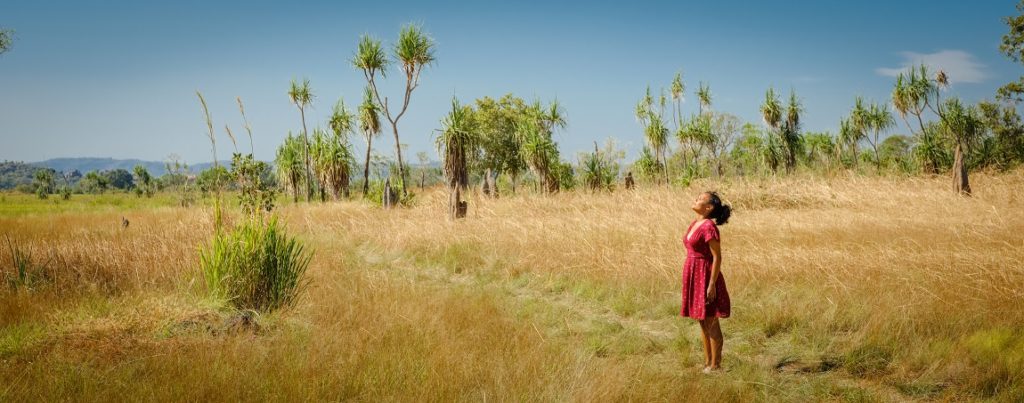
Miranda Tapsell stars in Top End wedding, in cinemas in May 2019. Picture: Supplied
Co-written by Joshua Tyler and actress Miranda Tapsell, the movie tells the story of successful lawyer Lauren and her fiancé Ned who have just 10 days to find Lauren’s mother who has gone AWOL somewhere in the Northern Territory. They also need to reunite her parents and pull off their dream wedding. The drama of the film is underscored by the drama of the landscapes – the Tiwi Islands, Jabiru, Darwin, Nitmiluk (Katherine) and Kakadu.
The NT has a long history of film showcasing the unique Australian landscape. These are the places you need to star in, starting with Top End Wedding.
Darwin (Top End Wedding)
In the film, Lauren and Ned head to Darwin to introduce the in-laws to her family.
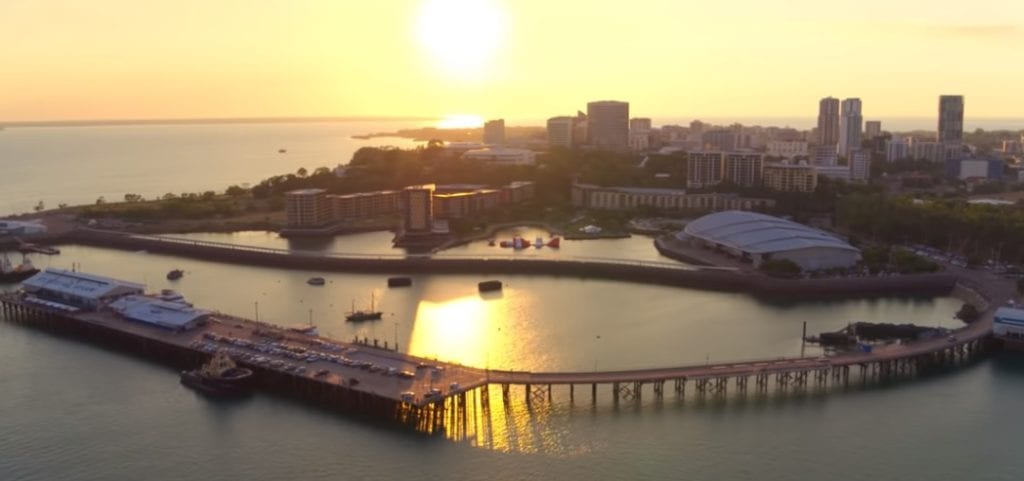
The city of Darwin in Top End Wedding. Picture: Supplied
The Northern Territory’s capital is sultry, laid-back and packed full of family fun. Maybe not so much for Lauren, but it can be for you.
Families can start the morning off in the wave pool, then visit Crocosaurus Cove for a terrifying crocodile dive adventure. Any visit to Darwin must include the evening Mindil Beach Markets. These sunset markets overlooking Mindil Beach sell just about everything – candles, crocodile leather goods, bush soaps, jewellery, clothing, art and even shoes. Wander through the 300 stalls to find some true NT souvenirs to take home. Kids will love the laughing clowns, jumping castles, face painting and circus workshops.
Nitmiluk (Katherine) (Top End Wedding)
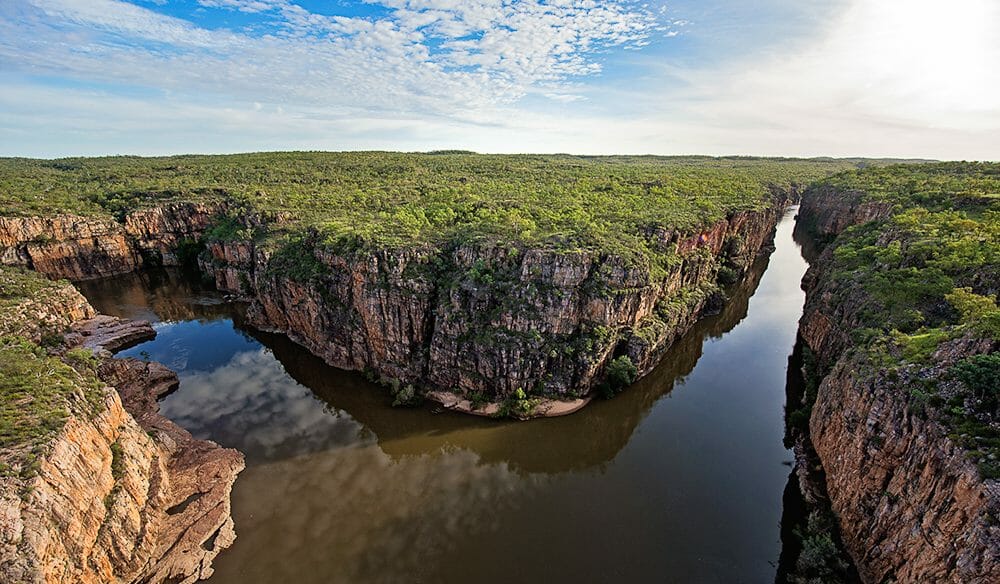
Nitmiluk Gorge, NT Australia
Nitmiluk National Park is a three-hour drive south of Darwin. It has rugged sandstone cliffs, spectacular waterfalls and deep pockets of lush rainforest. It’s pronounced Nit-me-look which means “cicada place” in the Jawoyn language.
This is the land of the Rainbow Serpent (Bolung) Dreamtime story. From above the snaking 13 gorges are all visible. A helicopter flight allows you to appreciate the geography, the scale and the incredible colours of this unique landscape.
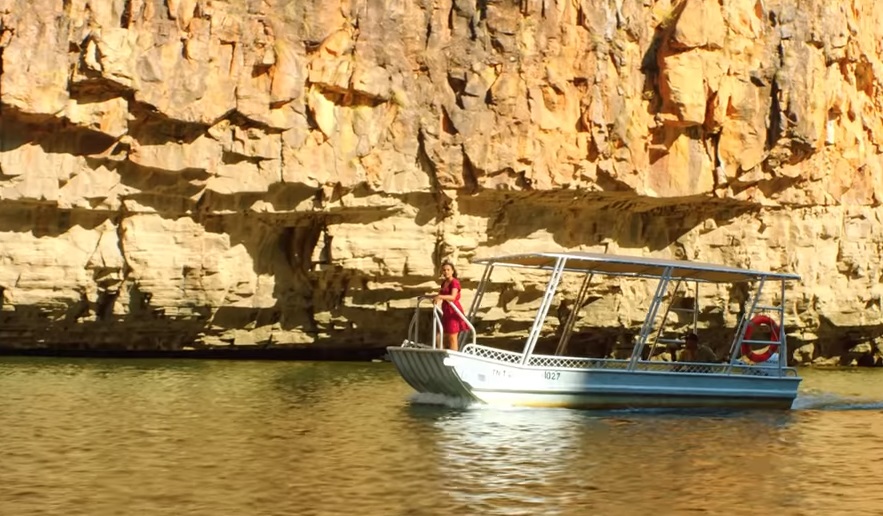
In Top End Wedding, Lauren explores the gorge on a boat. Picture: Top End Wedding.
Or you can hire a canoe and paddle your way through. Just don’t drop the paddle.
The Tiwi Islands (Top End Wedding)
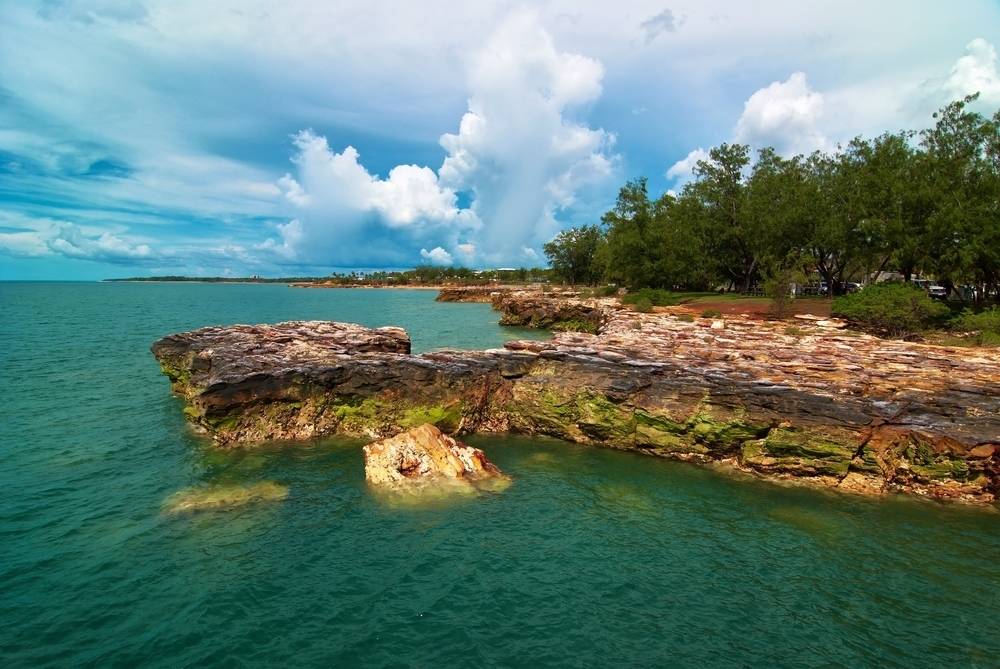
The Tiwi Islands are 2.5 hours by ferry from Darwin. Picture: Family Travel
Known locally as the ‘Islands of Smiles’, the Tiwi Islands (Bathurst and Melville), are 80km north of Darwin, or 2.5 hours by ferry. The two islands are packed with coastal wetlands, eucalyptus forest, secluded waterfalls and deserted beaches.
The Tiwis are famous for friendly people, pristine waters, year-round blue water fishing, and the annual Tiwi Islands Grand Final and Art Sale. This Bathurst Island event, held on March 17, combines a celebration of local art with the island’s utmost passion – football. Families can meet Tiwi Islands’ artists, and see a huge selection of authentic paintings, prints, weaving and carvings – some of which are available for sale.
Ooraminna Station (Sweet Country)
Directed by NT-born director Warwick Thornton, Sweet Country is a period western thriller about an Aboriginal stockman who kills a white station owner. Sam Neill stars alongside Aussie stalwart Bryan Brown who plays a police sergeant desperate for justice. With the help of Aboriginal trackers, Brown leads a posse of landowners in hot pursuit through the rugged red terrain of the MacDonnell Ranges and around Alice Springs, the gateway to the Red Centre.
Ooraminna Station, on the outskirts of Alice Springs, was one of the key locations featured in Sweet Country. It also stared in the film Drovers Boy. If you like the idea of venturing off the beaten track, but still with a little guidance, then GPS-tracked independent bush walks offered by the folks at Ooraminna Station Homestead are just the ticket.
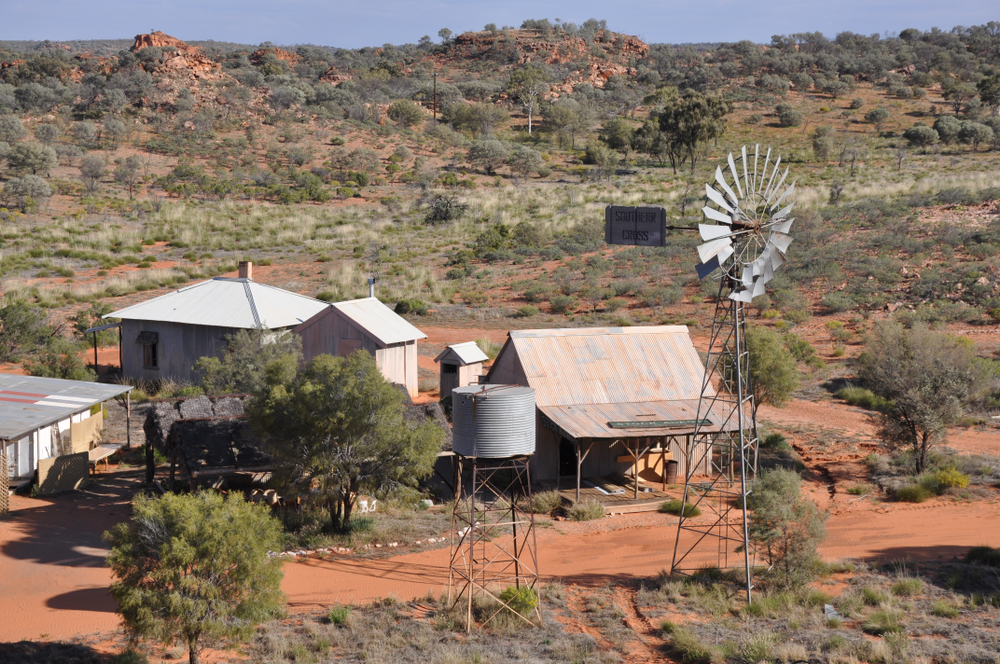
Ooraminna Station. Picture: J Mundy / Shutterstock
The homestead’s self-guided GPS walking tours encourage guests to explore the surrounding dramatic desert escarpments by foot, complete with catered picnic hampers supplied by the homestead. The fully catered four-cottage property is accessible by four-wheel drive. It will take you 30 minutes from Alice Springs. The property is set around a traditional drover’s shed. They also have yoga and meditation retreats.
Sweet country also stars Alice Springs, MacDonnell Ranges, Ooraminna Station, Simpsons Gap, Trephina Gorge, Lake Gairdner, Ambula Station and Garden Station.
Daly Waters (Last Cab to Darwin)
In this unlikeliest of hits from 2015, Australian acting legend Michael Caton starred as Rex, a Broken Hill cab driver who embarks on the road trip of a lifetime. What follows is a 1900km road trip through some of the Territory’s wild countryside as Caton and a gaggle of outback characters he meets along the way make their way north to Australia’s tropical capital city, Darwin.
Daly Waters Pub, is Territory’s oldest pub and it shines in this quintessentially Aussie flick. Draped in bougainvillaeas and crammed with Australian memorabilia on the inside, the pub opened in the 1930s and has held a continuous liquor licence since 1938. As the current publican states, the establishment’s focus is on the important things in life, such as cold beer and filling your wine glass up past the line. And the pub-grub is pretty good too.
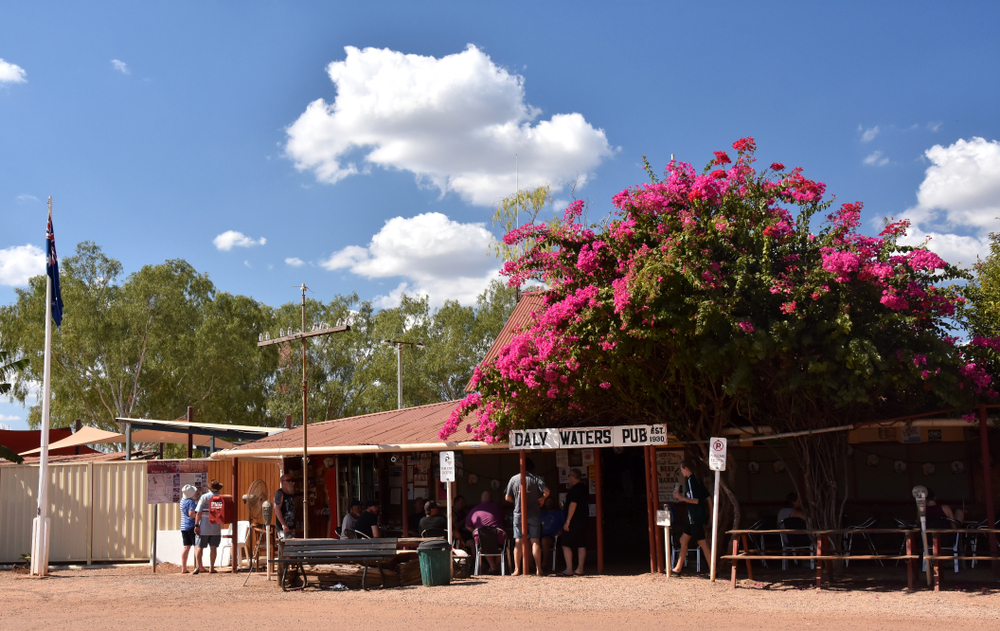
The famous Daly Waters historic pub, which is decorated throughout with banknotes and other memorabilia left by visitors from every corner of the globe. Picture: katacarix / Shutterstock
Berry Springs (Last cab to Darwin)
Venture off the Stuart Highway for a quick stop at a watering hole of a different kind. Berry Springs’ natural rock swimming hole, another standout location in Last Cab to Darwin. An oasis of green tropical plants, the sound of clear waters splashing off rocky ledges into a pool of cool water mixed with the sound of birdlife calling in the undergrowth.

Berry Springs Northern Territory. Picture: Shutterstock
This is one of the most beautiful places to cool off and chill out in Darwin. Grab some lunch from the kiosk and have a picnic beside one of the swimming pools. Between March and April, you can see stunning wildflowers in bloom.
King’s Creek Station and Watarrka National Park (Tracks)
Tracks is the real-life story of Robyn Davidson., an adventurer who trekked across the 2700km of Central Australian desert in the 1970s. The journey took Davidson from Alice Springs to the Indian Ocean. With four camels, a faithful dog and National Geographic photographer Rick Smolan in tow to capture the vastness of the Red Centre, the elemental landscape of the outback morphs into a major protagonist in the movie.
Kings Creek Station, which lies around 130km northeast of Uluru as the crow flies, featured heavily in the film. The working cattle and camel station is set amongst majestic desert oaks on 1800 square kilometres of Australian desert at the foot of the otherworldly George Gill Range.
Would-be cameleers and adventurers can get a taste of Davidson’s journey by saddling up for a sunrise or a sunset lope around Uluru, the spiritual home of the Pitjantjatjara tribe. Like Davidson’s journey on the big screen, a trip here is a visual journey through Central Australia’s sacred and ancient landscapes that will not only leave a lasting impression but an imprint on your heart.
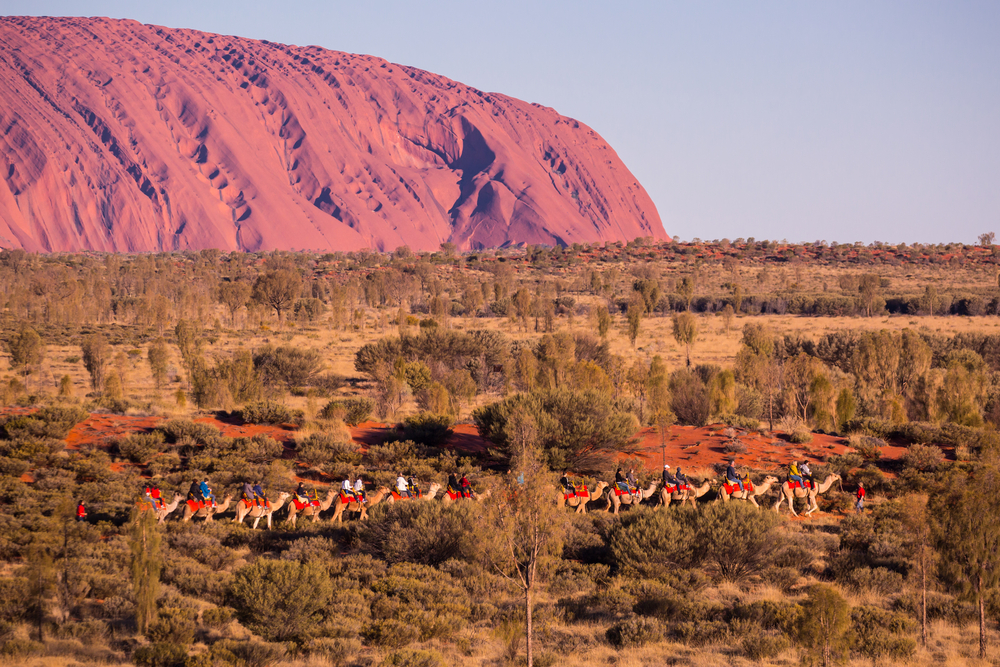
A camel tour on a clear winter’s evening sunset in the Northern Territory, Australia. Picture: Shutterstock
Darwin Harbour and Stokes Hill Wharf (Australia)
Set in the Top End in the 1940s, Baz Luhrmann’s big-budget blockbuster featured Nicole Kidman, as the most unlikely of cattle barons, and Hugh Jackman as her hardworking drover. The 19 February Bombing of Darwin in 1942 formed the dramatic backdrop of the final scenes of the movie as war-time bombing raids by the Japanese killed and wounded hundreds in Australia’s Top End.
Fast forward to the present day and modern Darwin is a laid-back tropical city. Travellers can learn about the Bombing of Darwin with the most contemporary of storytellers: high-tech, virtual reality devices at the Royal Flying Doctor Service Darwin Tourist Facility on Stokes Hill Wharf, where the bombing raids depicted in the film actually happened. Kids can see a suspended full replica Mitsubishi Zero Japanese warplane, a replica bomb and incredible holograms that bring the war to life.
Despite its relaxed vibe, Darwin doesn’t shy away from its heritage and has plenty of excellent war-related attractions including the East Point Military Museum, the Historic City Walk, WWII Oil Storage Tunnels, the Darwin Aviation Museum and Lyon’s Cottage, a beautifully preserved former British-Australian Telegraph Resident within a coo-ee of the city centre.
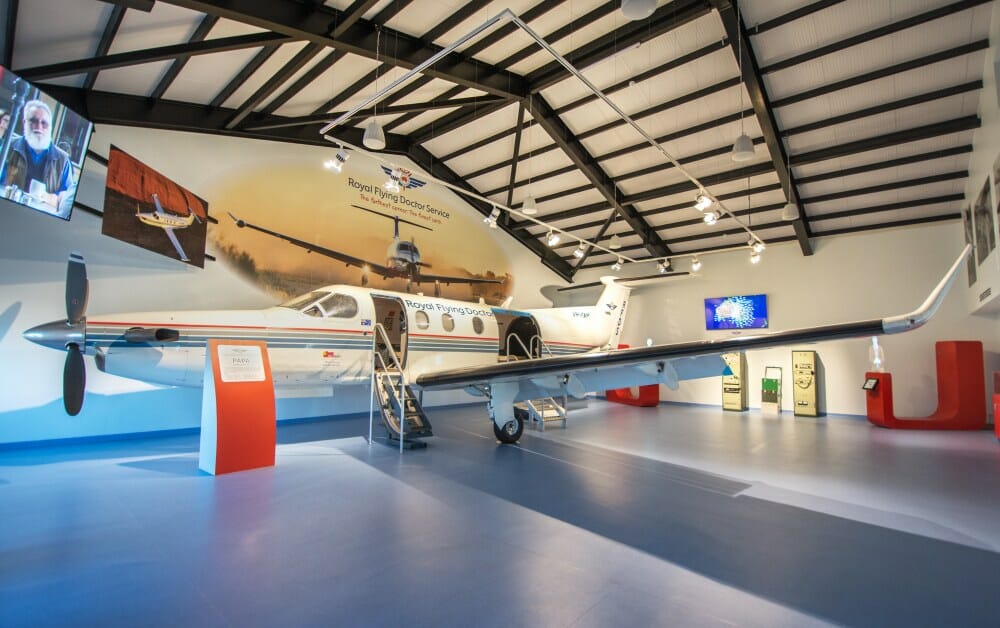
The RFDS museum in Darwin. Picture: RFDS
Yellow Water Billabong, Kakadu (Rogue)
Inspired by the true story of Sweetheart, a giant crocodile with a penchant for attacking boats in the 1970s, Rogue director Greg McLean scares the living daylights out of his audience with a vicious eight-metre crocodile that’s hell-bent on terrorising an American journalist trapped on a rapidly flooding mud island.
Yellow Water Billabong is in World Heritage-Listed Kakadu National Park. For a safe way to explore, take a Yellow Water Billabong cruise.
Kakadu’s rich ever-changing wetlands are home to one-third of Australia’s bird species including the distinctive Jabirus and brilliant brolgas. Crocodiles lurk on the banks and in the water and buffalo roam the floodplains.
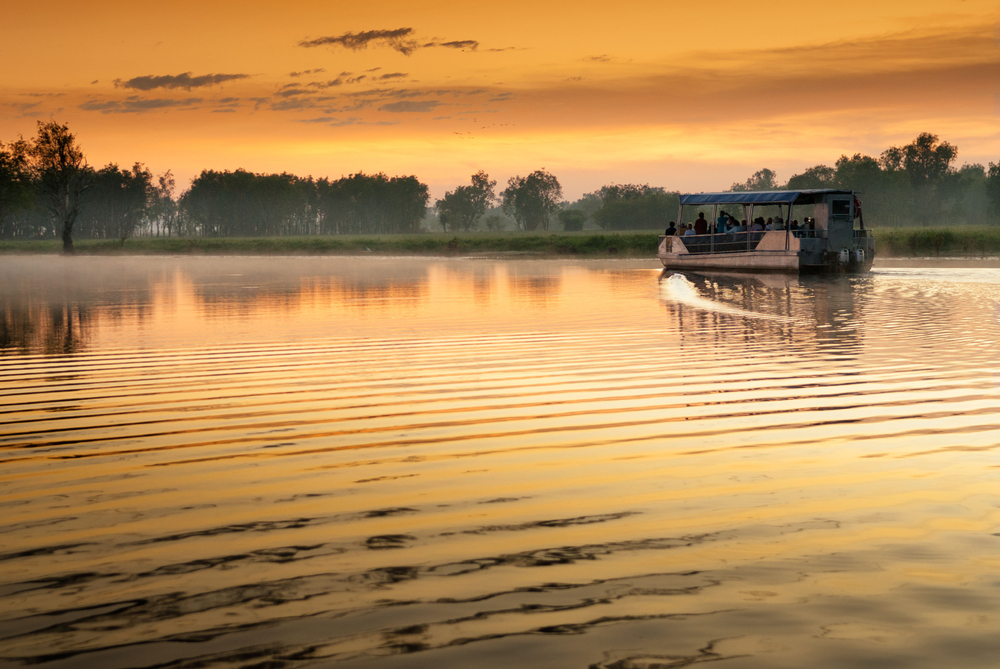
Yellow Water billabong in golden dawn light, Northern Territory, Australia
The cruise showcases the biodiversity and vastness of the wetlands alongside the Territory’s famous salties in their lush natural habitat.
Arnhem Land (Ten Canoes)
Set in an Australia without western contact or influence, Ten Canoes follows the story of a clan of Aboriginal men hunting goose eggs and building canoes. But there’s a Dreamtime story within the wider tale and a glimpse into a culture where values are taught through storytelling. Fittingly, it was shot in one of Australia’s last untouched wilderness, Arnhem Land, and was the first movie filmed entirely using the Aboriginal language.
Bordered by Kakadu National Park and the Arafura Sea, Arnhem Land is one of the Northern Territory’s most spectacular destinations. It’s 100,000 square kilometres of ancient and unspoiled land and sandscapes are tucked away in the northeast corner of the NT. Arnhem Land is accessible by plane from Darwin or Cairns, by boat from Cairns, or by four-wheel drive from Darwin, Kakadu or Katherine.
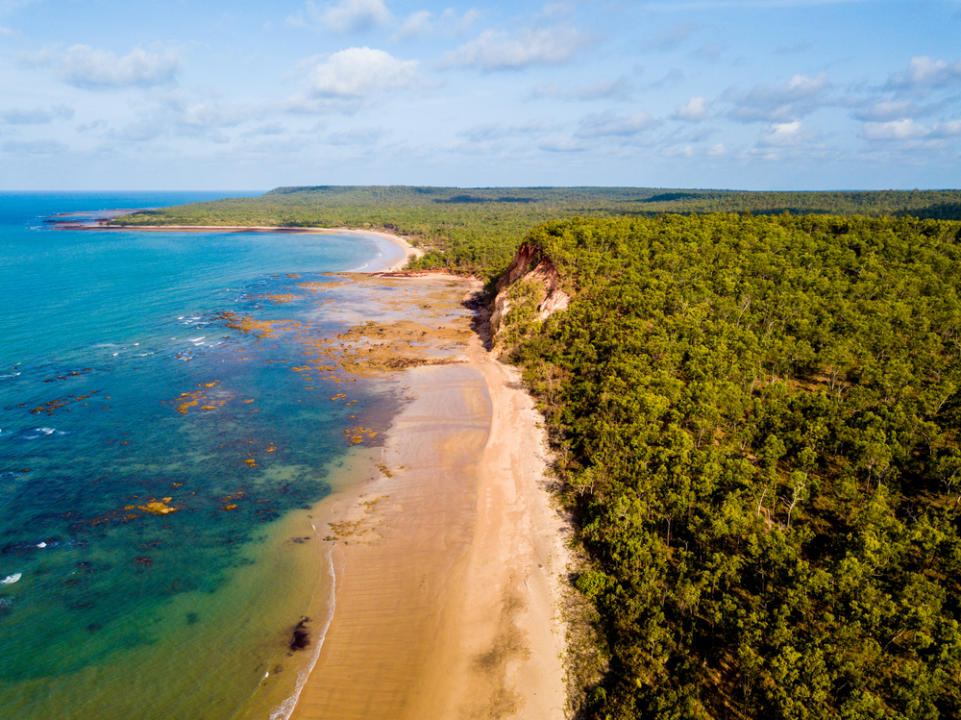
Rainbow Cliffs – Nhulunbuy, Arnhem Land Australia. Picture: Craig R_AU / Shutterstock
Central Australia, Watarrka National Park, Alice Springs and Kings Canyon (The Adventures of Priscilla, Queen of the Desert)
This cult Australian film celebrates its 25th anniversary in 2019. The Adventures of Priscilla, Queen of the Desert has repeatedly voted one of the Australia’s best home-grown films. With eye-popping costumes set against the extraordinary colours of the Red Centre, the film chronicles the adventures of two drag queen performers and their transgender friend as they road-trip from Sydney to Alice Springs. Aboard their pink bus, Priscilla, the trio are on a quest to perform a cabaret show at the Crowne Plaza Alice Springs Lasseters in the Central Australian desert.
You can still follow in the enormously high heels of Mitzi, Bernadette and Felicia on an immersive journey through the NT’s spiritual heartland. The movie references are easily recognisable. Relive the film’s unforgettable finale by hiking the rim of the deepest of gorges in the Red Centre (there’s even a landmark called Priscilla’s Crack if you know where to look) or visit the iconic Lasseters.
To mark the milestone anniversary, the Fab Alice Festival will kick off in Alice Springs between 8-10 March. The three-day festival will showcase comedy, cabaret, live music and social activities. The festival aims to give the LGBTQI community the chance to celebrate and promote a broader message of diversity, all whilst exploring Alice Springs’ more playful side. Bring your sequins.
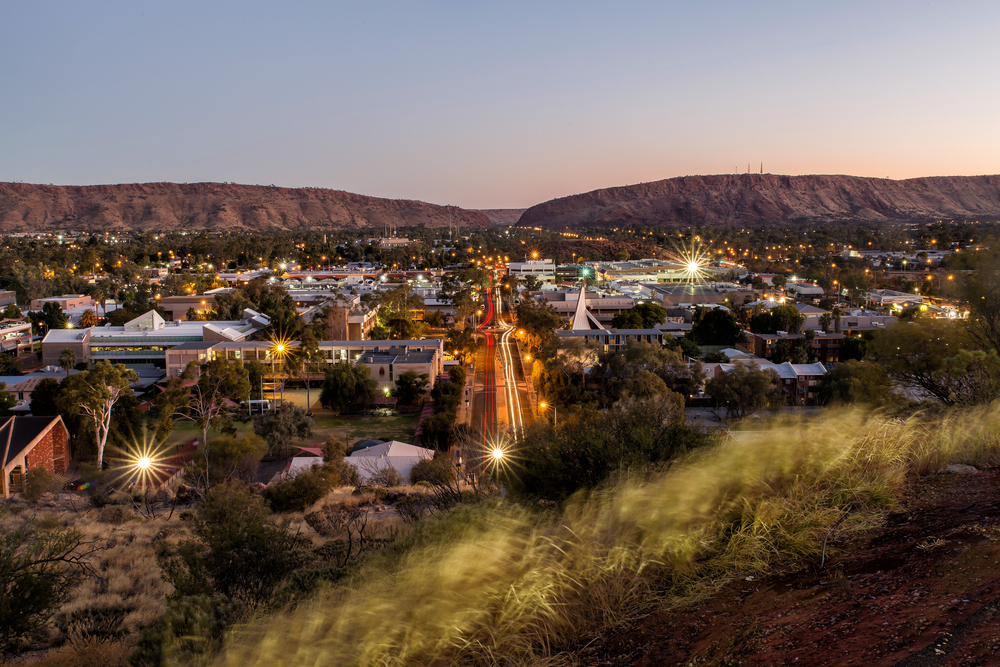
Alice Spring at Australia at sunset. Picture: coloursinmylife / Shutterstock
Kakadu National Park and Humpty Doo (Crocodile Dundee)
Think classic Aussie movies and chances are Crocodile Dundee will come up in your top five. In the film, laconic bushman-cum-crocodile-poacher Mick Dundee charms an American journalist and takes her outback to see “his country”.
The vast landscape of Kakadu played one of the starring roles in Crocodile Dundee, but the big screen just doesn’t do this region justice.
No visit is complete without a stopover at the stunning Gunlom Falls with its postcard-perfect, natural infinity rock pool and views over the southern region of Kakadu. With one of the highest concentrated areas of Aboriginal rock art sites in the world, don’t miss Nourlangie Rock, another important indigenous cultural icon believed to be the earliest tropical settlement in Australia. Kakadu National Park
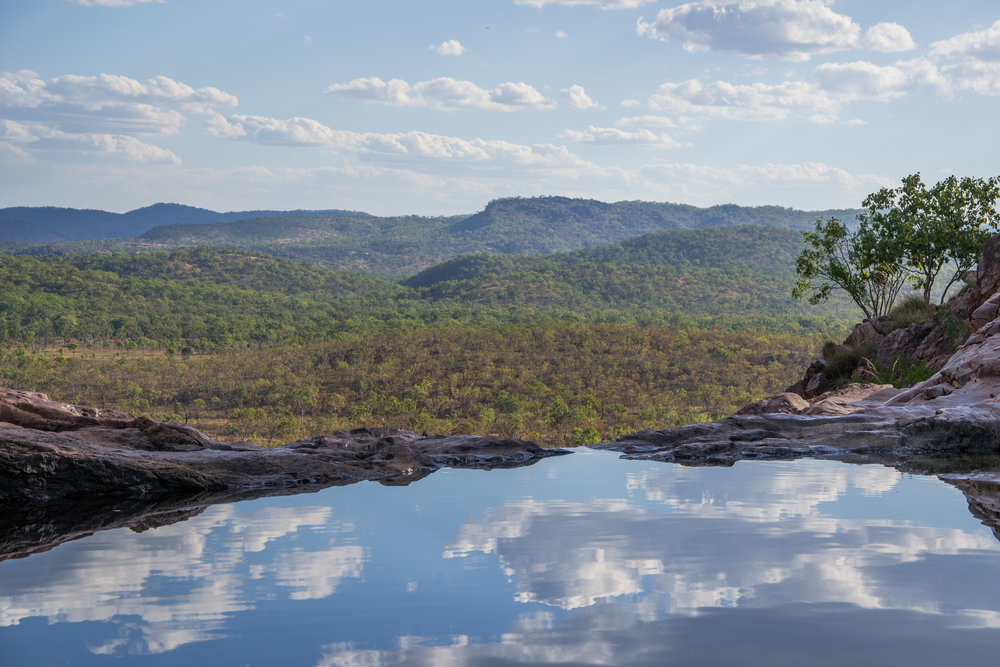
Gunlom Falls, Kakadu National Park. Picture: Yoann Neb / Shutterstock
READ MORE:
Northern Territory adventures you need to try
The best off the beaten track destinations
Go all out at Australia’s luxury all-inclusive resorts

